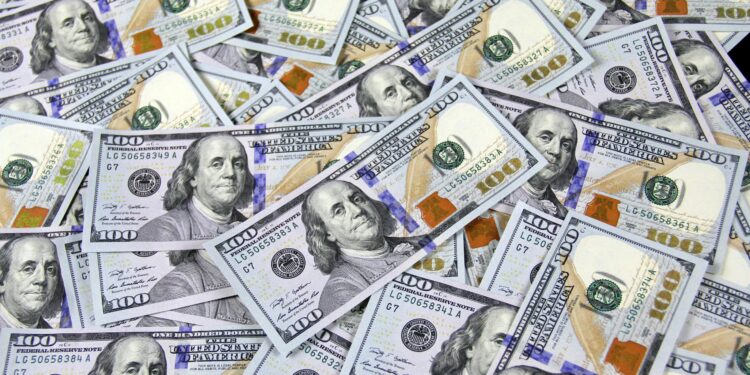Canada and Mexico Fire Back, China Seeks WTO Action, and the EU Prepares for Potential Impact
U.S. President Donald Trump has reignited global trade tensions with a sweeping new round of tariffs targeting America’s three largest trading partners—Canada, Mexico, and China. The order, signed on Saturday, imposes 25% tariffs on goods from Canada and Mexico and a 10% duty on Chinese imports, set to take effect Tuesday. Energy resources from Canada, however, will face a reduced 10% tariff to mitigate disruptions in gasoline and home heating oil prices, according to administration officials.
Trump’s executive order warns that any retaliation from the targeted countries could lead to an “increase or expansion in scope” of the duties. In a post on X (formerly Twitter), Trump justified the tariffs by citing the “major threat of illegal aliens and deadly drugs killing our Citizens, including fentanyl.”
The U.S. conducts approximately $1.6 trillion in trade annually with Canada, Mexico, and China. The administration’s strategy appears to leverage these tariffs as bargaining tools to push for foreign policy changes, particularly concerning immigration and drug control. However, swift and stern responses from these nations indicate that Trump’s tariff gamble could spiral into a full-scale trade war.
Canada’s Swift Retaliation
Canadian Prime Minister Justin Trudeau wasted no time in responding. Within hours of Trump’s announcement, Trudeau imposed retaliatory tariffs of 25% on $155 billion worth of U.S. goods. Starting Tuesday, $30 billion in U.S. products will be hit, with the remaining $125 billion facing tariffs in 21 days, allowing Canadian businesses time to adjust their supply chains.
“Like the American tariffs, our response will be far-reaching,” Trudeau declared during a press conference. Everyday items such as American beer, wine, bourbon, fruits, and vegetables will be targeted, alongside major consumer goods like household appliances, furniture, and sports equipment. Industrial materials such as lumber and plastics are also included.
Trudeau directly addressed American citizens, warning that these measures, while harmful to Canadians, will also have “real consequences” for Americans. “Yes, we’ve had our differences in the past, but we’ve always found a way to get past them,” he said, urging Trump to seek partnership over punishment.
In a further move, Ontario Premier Doug Ford announced that all American alcohol products would be pulled from the province’s government-run liquor stores starting Tuesday. The Liquor Control Board of Ontario will also remove U.S. products from its catalog, preventing other retailers from restocking them.
Mexico Takes a Cautious but Firm Stance
Mexico’s response was less immediate but equally resolute. President Claudia Sheinbaum criticized Trump’s tariffs and directed the Secretary of the Economy to activate “Plan B,” which includes both tariff and non-tariff measures to defend Mexico’s interests.
“Mexico does not want confrontation,” Sheinbaum stated, emphasizing the importance of collaboration between neighboring countries. She also addressed the fentanyl crisis, asserting, “Mexico not only does not want fentanyl to reach the United States, it does not want it to reach anywhere.”
While specific retaliatory measures were not disclosed, Sheinbaum underscored the principles of shared responsibility, mutual trust, and respect for sovereignty, indicating that Mexico will stand firm without escalating tensions unnecessarily.
China Opts for Legal Recourse, Holds Back on Escalation
China’s response focused on legal action rather than immediate tariff retaliation. The Chinese Ministry of Commerce announced plans to file a lawsuit with the World Trade Organization (WTO) and vowed to “take necessary countermeasures.”
“The U.S.’s unilateral tariff hike seriously violates WTO rules, does nothing to resolve its own issues, and disrupts normal economic and trade cooperation between China and the U.S.,” the ministry stated.
China’s decision to refrain from immediate escalation has sparked cautious optimism that a full-blown trade war might be avoided. The relatively lower 10% tariff on Chinese goods—a sharp contrast to Trump’s earlier threats of 60% duties—also suggests room for negotiation.
Pushing back against Trump’s fentanyl claims, China labeled the issue a “domestic” U.S. problem and urged Washington to address it internally rather than through international trade measures.
The EU Watches Closely
While not directly targeted, the European Union has expressed concern over the broader implications of Trump’s tariffs. A European Commission spokesperson stated that the EU “regrets” the U.S. decision and will “respond firmly” if similar measures are applied to European goods.
Trump’s strained relationship with the EU, highlighted by accusations of unfair trade practices, has already set the stage for potential future conflicts. The EU emphasized that “tariffs create unnecessary economic disruption and drive inflation,” signaling its readiness to defend its interests if necessary.
Global Economic Impact
Economists warn that the fallout from these tariffs could be severe. Paul Ashworth, Chief North America Economist at Capital Economics, described Trump’s actions as “the first strike in what could become a very destructive global trade war.”
Ashworth predicts that the economic repercussions will be significant, potentially pushing Canada and Mexico into recession due to their heavy reliance on U.S. exports. In the U.S., consumers could face surging prices on everything from cars and electronics to food and household goods, fueling inflation and straining the economy.
With the possibility of universal tariffs looming, the global economic landscape faces unprecedented uncertainty. As nations brace for further developments, the world watches to see whether diplomacy can prevail over protectionism.
You might like this article:Walgreens Halts 92-Year Dividend to Strengthen Finances










